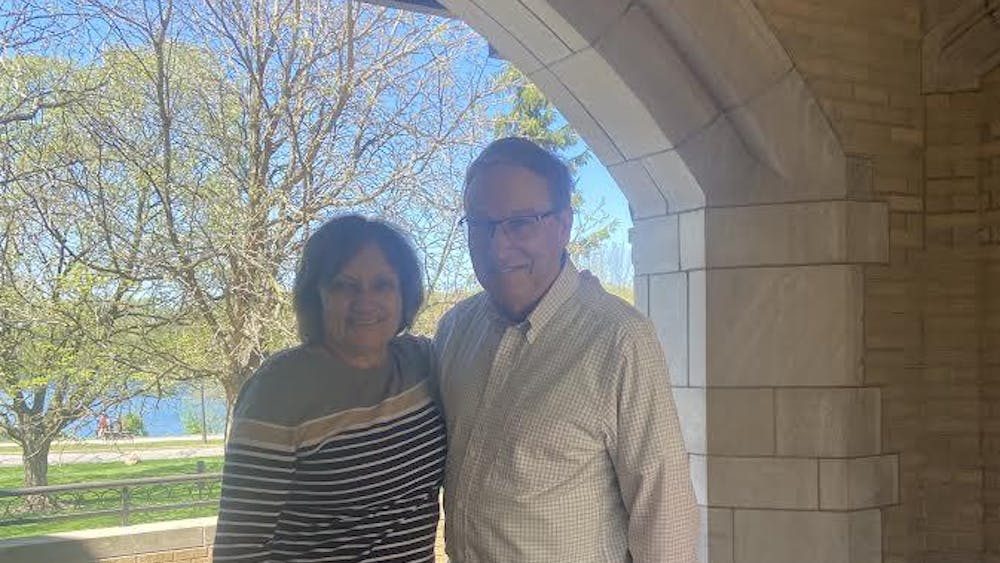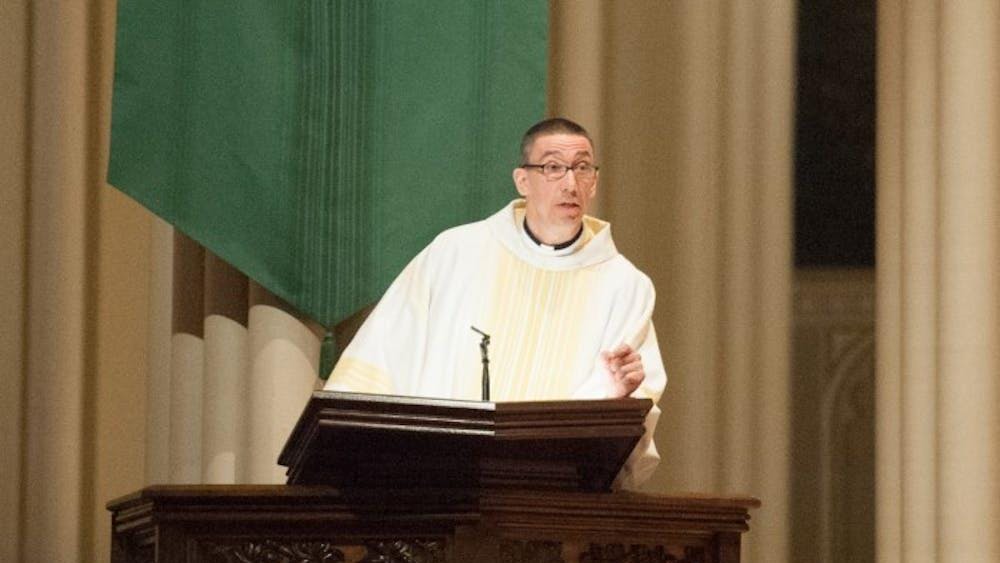Editor's Note: This story is the first installment in a two-part series on University President Emeritus Fr. Edward Malloy's presence at Notre Dame. This series is also the second of three similar "From the Office of the President" series on the University presidency to appear in coming weeks.
During the first semester Fr. Edward Malloy taught at Notre Dame, he taught more classes than any other faculty member at the time.

"I taught six sections each semester because I was supposed to teach two semesters of seminar, and I had too many students," he said. "So in a burst of young enthusiasm, I broke it into six sections. ... I taught one seminar from midnight to 2:30 in the morning because I couldn't find enough available time otherwise. But I loved it."
That semester as a seminar professor was Malloy's first as a teacher at Notre Dame. His career eventually led him to the Office of the President, where he served from 1987 to 2005.
During those 18 years in office, Malloy changed Notre Dame. The number of faculty members increased by more than 500. Notre Dame's study abroad programs spread from nine countries to 17. He brought more diversity to the University, increasing the percentage of minority students from seven percent to 18 percent of the undergraduate population.
Malloy changed Notre Dame. But before, during and after his tenure in the Office of the President, one constant remains.
He teaches.
As he sat in his office this week, Malloy looked back on his days as a high school basketball player and his one semester as an engineering major, his call to the priesthood on top of a mountain in Mexico and the beginning of his administrative life at Notre Dame years later. He leaned back in his chair, balancing precariously on its two wooden legs.
"What I love about teaching in college is it's a pivotal moment in people's lives. They're away from home, they're refining their talents, they're preparing to do all these things, choices about what they want to do with their lives, choices about the possibility of marriage and family. So I always thought about what a great opportunity it would be to teach at that level."

At the beginning of his presidency, Malloy decided he would continue to live in Sorin College among students. He would continue to make time in the classroom part of his routine, teaching a class on literature and film for the Department of English.
The Board of Trustees bet he would move out of Sorin and change his mind after six months, he said. He never did.
"I was always intrigued [by teaching], 'cause I loved my days at Notre Dame, about the possibility of teaching at a place like this," he said. "I lived out my dream.
The teaching style Malloy developed as a professor in English and theology began before teaching even crossed his mind, and it carried through to his leadership style at the head of the University.
"I think from the days I was in high school, I was comfortable in public speaking," he said. "I think a lot of it has to do with being a basketball player, where you can focus on shooting foul shots with all the people waving their arms trying to distract you. ... I think you can learn how to focus on the activity as opposed to all the distractions that are around you."
As a teacher and lecturer, the former president stood in front of audiences of students, academics, alumni and others on hundreds of occasions.
"I never use a text or an outline or notes," he said. "So I talk before 10,000 people or 20,000 people or five people, and I mean, I prepare, but I do it from my head. ... That's my style."
Now, Malloy no longer teaches six classes per semester. His one course each term focuses on autobiographical or biographical books and movies, but that style he developed as a young teacher is still important.
"I try to make it a true seminar so I get all the students engaged every class, they have to talk every class," he said. "And I have to shut up the people that talk all the time and some people say nothing all semester, so I have to elicit their participation. So I think I came to appreciate because of that experience the seminar style of teaching."
In the same way he encouraged his students to participate in class and work together, Malloy pushed his administration to be a cohesive team. Everyone gets a turn, everyone speaks up.
"I'm very group and collaboration oriented," he said. "So I like to give a lot of effort to establishing our goals and set priorities and things like that, but then I would entrust the responsibility for the follow-through in different areas of the University to the people who were supposed to be doing it. ... I really believe in group effort."
While he never teaches the same material twice, he said he does like to bring the coursework back to a Notre Dame connection.
"I think it allows a kind of identification between the students and the student material we're looking at," he said.
His curriculum has included "What Though The Odds," an autobiography by Notre Dame alumna Haley Scott DeMaria, who came into his class and discussed the book with his students, Malloy said.
"It was just unbelievably good," he said. "And somebody asked her at the end, after her story of recovery and swimming again and now living a full life as a mother and coach and teacher and all that, what about pain? She says, 'I live with pain. ... But it's better than all the other alternatives. You move on in life.' It was a very powerful moment."
One of his former students, Alex Montoya, who has three prosthetic limbs, also became a part of Malloy's class again when the former president included his book "Swinging for the Fences" in his syllabus.
"[Montoya] was a valuable member of the class, but he also taught us something," Malloy said. "We had to adjust. People had to come to class with him, help him up the steps with his books and all that stuff. Anyway, he wrote a book about his experience, which has a whole chapter on my class, so we used his book too."
But more important to Malloy than teaching his students about other people's lives are the moments when he gets to learn about their own stories. After years as a University president, a Sorin Hall resident and a teacher, he still works to engage the students he meets in the classroom.
"The first class, they have to tell their story," he said. "We spent the whole class getting to know each other before we start talking about the elements of the class, and it's a great opportunity. I really get to know my students."
He's writing his ninth book. He serves on the board for Notre Dame Australia and a number of national organizations. He remains active with local organizations like the Robinson Community Learning Center and the South Bend Center for the Homeless.
But for one class period a week, Malloy is still a teacher.
"My job description now is I can do whatever I want basically, but I've kept teaching because I enjoy teaching," he said.
Tomorrow: Malloy on the voice of a University priest-president, facing controversy under the dome, looking ahead to Notre Dame's next step at a top-tier college and more.











